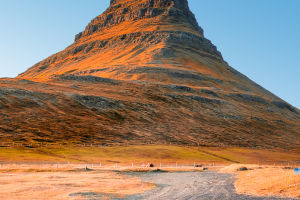Deforestation is a critical global issue that is affecting our planet in various ways. According to the United Nations Food and Agriculture Organization (FAO), global forest cover has decreased by almost 100 million hectares over the past two decades.
Although the rate of deforestation has slowed down, it is still happening at an alarming rate. The impact of deforestation has been particularly severe in sub-Saharan Africa and Southeast Asia, where the forest cover has declined significantly over the past few years.
One of the major causes of deforestation is agriculture, particularly in less developed countries, where farmers clear forests to make way for crops or livestock. This has resulted in the loss of valuable habitats for wildlife, soil erosion, and increased greenhouse gas emissions.
Deforestation is also a significant contributor to climate change, as trees absorb carbon dioxide, which is a greenhouse gas that traps heat in the atmosphere.
In 2019, the Amazon fires burned nearly 1 million hectares of forest, and the Australian fires burned 6 million hectares of forest. These are just two examples of how deforestation can cause devastating environmental disasters, which not only impact wildlife but also have a significant impact on human lives.
The FAO states that 12 million hectares of deforestation are lost worldwide each year, with sub-Saharan Africa and Southeast Asia being the most affected regions. In Southeast Asia, forest cover has decreased from 49% in 2015 to 47.8% today.
In sub-Saharan Africa, it has fallen to 27.8% from 28.7% five years ago. Countries like Cote d'Ivoire, which prioritize agriculture, have seen the proportion of forests fall to 8.9% of the national territory from 10.7% in 2015.
However, Kenya, Mali, and Rwanda have taken significant steps to oppose deforestation.
In contrast, many parts of Asia, Europe, and North America have seen their forest cover increase or remain flat over the past five years due to policies that encourage the restoration of woodlands and allow forests to expand naturally.
This demonstrates that with the right policies and actions, it is possible to protect forests and even increase their coverage.
Finland is an excellent example of a country that has effectively protected its natural environment. Its comprehensive environmental data and high-level technical expertise underpin its environmental policy, which has been made possible by the country's status as one of the world's richest industrialized nations.
Finland's relatively low population density and unpolluted environment also promote nature conservation.
However, even Finland has had to address threats to its environment, such as deforestation and overgrazing by reindeer farming in Lapland. The country has taken measures to protect large forest areas and restrict reindeer numbers.
The development of tourism in Lapland has also been a double-edged sword, as it can both burden the environment and encourage its protection.
One of the main drivers of deforestation is the demand for wood, which is used for furniture, paper, and other products. The World Environment Organization has reported that 80% of forest wood is used for furniture and 20% for paper, disposable chopsticks, and other products.
Reducing the demand for wood and promoting the use of alternative materials, such as aluminium, can significantly reduce deforestation and even lower the risk of urban fires.
Green furniture, made from sustainable materials, has become a trend as people become more aware of environmental issues. By choosing eco-friendly furniture, we can make a difference and help protect the planet's forests.
Individuals and governments need to take action and prioritize environmental conservation to ensure that we leave a livable planet for future generations.


